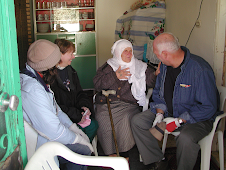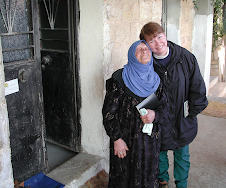
Echo, a Big Brown Bat
At the Cochran Mill Nature Center, where I work on Saturdays, we have a newish exhibit -- bats. These bats are Egyptian Tomb Bats. You'd think these four girls would be vampire bats, since they are Tomb Bats, but they eat fruit. Grapes, bananas, melon, etc., they love their fruit. They might consume tiny insects on their fruit, but it's accidental. Other bats eat a wide variety of foods including insects, small mammals, small reptiles, lizards, frogs, birds, other bats, nectar/pollen, fruit, flowers, leaves, fish, blood, scorpions, and centipedes.

"Our Girls" Isis, Cleo, Pammie, and Phaedra
These bats are bigger than Georgia's bats, being about as long as my hand. Vicky Smith, bat lady extraordinaire, cares for these bats, as well as many that she keeps at her home. Some will never recover totally and Vicky keeps them, tenderly caring for them throughout their lives.

Little Juanita, a Mexican free-tail. She had to have her tail amputated after an infection and 3 fingers removed after she broke them. "See how cute the little pink end on her tail is. Unfortunately it has now healed back to the natural color," Vicky says. "She was so cute with her prissy little pink tail, it suited her personality." (Vicky is handling Juanita with bare hands because she has been vaccinated against rabies. She emphasizes that no one should handle a wild bat with bare hands!)
Sixteen different species of bats live in Georgia, according to Vicky. Most U.S. bats weigh less than an ounce (28 grams). The bats at the Nature Center weigh 110-140 grams. Sparky (see photo) weighs only 6 grams, full grown. Our largest Georgia bats weigh about 50 grams.

Mork, a Malayan Flying Fox. They are some of the largest bats in the world.
Since she handles wild bats, Vicky has to take rabies shots, similar to vaccinations that our pets receive. Our Georgia bats are rabies vectors, along with foxes, skunks, and raccoons. NEVER handle any of these wild animals. I was happy to learn that squirrels aren't much of a danger, since my toy poodle, Michelle, had a dust-up with a squirrel once. The squirrel won.

Keket, one of Vicky's original bats, unfortunately now deceased. The holes in her wings are where "punches" were made to test DNA. Usually they heal.
I clean the bat cage each week and enjoy interacting with Isis, Cleo(patra), Pammie, and Phaedra, who all hang by their feet in the front corner of their cage. When I must disturb their morning sleep, they migrate as a group across the top of the cage, fussing a little, and hang together until I'm through, then slowly move back into their favorite spot. You can tell it's their favorite by the streaks of . . . well, you know, running down the front glass. If I lean into the cage under them, sometimes somebody wets right into my hair! I swear it's on purpose. But they can be sweet, too, sniffing at my gloved hands and watching me closely as I polish the glass. They will move just far enough for me to wipe the glass behind them, never offering to bite or scratch. (I don't have to have rabies shots, since these bats are not at risk.)

Vicky gives a supplemental feeding of banana baby food to Phaedra, who was sick.

The bats have colored rings on their thumbs (which look like part of their wings) except for Phaedra, who has removed 2. Vicky identifies them by the rings. She calls them all by name, as she takes them from the cage and examines them. Pammie has the green band, Isis has the white/light purple band, and Cleo has the yellow/hotpink band.
Phaedra, Vicky says, used to sniff her hand loudly, like a little dog, and seemed to enjoy a belly rub. She wears leather gloves for handling the "girls" since they do sometimes bite or chew on her fingers. They have pretty little faces, sort of like Chihuahuas, and teeth that look similar, too.

These little fellows live with Vicky. Elvis, was injured in a bat house accident. Sparky was injured by fireworks. He is a Southwestern myotis.
One of them sometimes chews on my glove fingertip, moving slowly. I don't think she is scared or threatening me, just curious. They also peer out of the cage when I open the door and remove the mesh, but so far (thank goodness!) haven't tried to escape.
I hope you enjoy the bat facts that Vicky was kind enough to send me. I know that some people are creeped out by bats, but they eat millions of mosquitoes a year and I really enjoy them.
You can reach Vicky Smith at www.eeingeorgia.org (Please look under the organizational tab for A-Z Animals.) For a classroom demonstration with her bats at your school, her email address is batlady1964@yahoo.com
You can visit Cochran Mill Nature Center at http://www.cochranmillnaturecenter.org/index.html
Amazing Bat Trivia
*The world's smallest mammal is the bumblebee bat of Thailand, weighing less than a penny.
*Giant flying foxes that live in Indonesia have wingspans of nearly six feet.
*The common little brown bat of North America is the world's longest lived mammal for its size, with life-spans sometimes exceeding 32 years.
*Mexican free-tailed bats sometimes fly up to two miles high to feed or to catch tail-winds that carry them over long distances at speeds of more than 60 miles per hour.
*The pallid bat of western North America is immune to the stings of scorpions and even the seven-inch centipedes upon which it feeds.
*Fishing bats have echolocation so sophisticated that they can detect a minnow's fin as fine as a human hair, protruding only two millimeters above a pond's surface.
*African heart-nosed bats can hear the footsteps of a beetle walking on sand from a distance of more than six feet.
*Red bats that live in tree foliage throughout most of North America can withstand body temperatures as low as 23 degrees F. during winter hibernation.
*The Honduran white bat is snow white with a yellow nose and ears. It cuts large leaves to make "tents" that protect its small colonies from jungle rains.
*Disk-winged bats of Latin America have adhesive disks on both wings and feet that enable them to live in unfurling banana leaves (or even walk up a window pane!).
*Frog-eating bats identify edible from poisonous frogs by listening to the mating calls of male frogs. Frogs counter by hiding and using short, difficult to locate calls.
*Vampire bats adopt orphans and have been known to risk their lives to share food with less fortunate roost-mates.
*Male epauletted bats have pouches in their shoulders which contain large, showy patches of white fur that they flash during courtship to attract mates.
Important Bat Facts
Nearly 1,000 kinds of bats account for almost a quarter of all mammals.
Worldwide, bats are an important natural enemies of night-flying insects.
A single little brown bat can catch 600 mosquitoes-sized insects in just one hour.
A colony of 150 big brown bats can protect local farmers from up to 33 million or more rootworms each summer.
The 20 million Mexican free-tails from Bracken Cave, Texas eat approximately 200 tons of insects nightly. Mother Mexican free-tailed bats find and nurse their own young, even in huge colonies where many millions of babies cluster at up to 500 per square foot. They do this by smell and sounds.
Tropical bats are key elements in rain forest ecosystems which rely on them to pollinate flowers and disperse seeds for countless trees and shrubs. In the wild, important agricultural plants, such as bananas, breadfruit and mangoes, cashews, dates, and figs rely on bats for pollination and seed dispersal.
Desert ecosystems rely on nectar-feeding bats as primary pollinators of giant cacti, including the famous organ pipe and saguaro of Arizona.
Bat droppings in caves support whole ecosystems of unique organisms, including bacteria useful in detoxifying wastes, improving detergents, and producing gasohol and antibiotics.
An anticoagulant from vampire bat saliva may soon be used to treat human heart patients.
Contrary to popular misconception, bats are not blind, do not become entangled in human hair, and seldom transmit disease to other animals or humans. All mammals can contract rabies; however, even the less than a half of one percent of bats that do, normally bite only in self-defense and pose little threat to people who do not handle them.
Bats are exceptionally vulnerable to extinction, in part because they are the slowest reproducing mammals on earth for their size, most producing only one young annually. Loss of bats increases demand for chemical pesticides, which can jeopardize whole ecosystems of other animal and plant species.


























I luv ya Beefy, but those little critters give me the creeps!! ;)
ReplyDelete